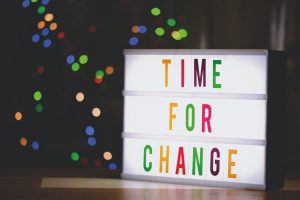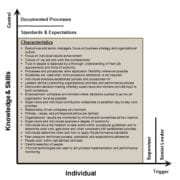How to Help People Get Unstuck: 3 Powerful but Simple Actions

In the business world, this is often termed resistance. Moreover, business leaders often go on to tell us that our resistance is irrational or a misunderstanding. Some “experts” will even tell us that the reason we struggle against change is that all the change we see makes us exhausted. But it is not resistance, and it is not exhaustion that makes us resist change. Quite simply, we are stuck.
Getting stuck is a biological response to change that is rarely explored and even more rarely acknowledged in business and work. We build entire algorithms, schema, or mental models around how to navigate our worlds that are deeply wired into our brains. When a change comes along, it requires us to rewire these algorithms. And we don’t want to. We get stuck because our brains get attached to the way things are today.
MEL: The 3 components of our limbic system
More specifically, we have a part of our brain known as the limbic system that is responsible for writing these algorithms. It writes the code not in a computer’s zeros and ones, but rather in three key subcomponents — memory, emotion, and learning. We call this MEL. Every time we learn something new, experience a strong emotion, or create a lasting memory, we develop a new piece of MEL that stays with us and triggers again in a similar situation.
MEL is certainly helpful for navigating the physical world. For instance, it helps us drive to work every day, recognize certain faces, and even read emotions. It is even useful for building connections among our peers, colleagues, and family members. We use the same process to write positive (and sometimes negative) memories into MEL along with the associated emotions to remind us how to respond to certain people that we love and maybe even those we dislike. We also use MEL to build affinities for organizations. It is the core of organizational culture, as we take the positive emotions felt by certain behaviors in an organization and replicate them throughout the organization. These are all positive ways we build and develop MEL for life.
The challenge of getting unstuck
The downside is that MEL does not easily adapt. People feel uncertainty about the future because changes directly challenge MEL. As we consider something new, the positive emotions of the past are replaced with concern, fear, and even anxiety. These negative emotions manifest themselves in the workplace in the form of low morale, reduced motivation, and a decline in productivity (among others). Employees shut. down and get stuck. In turn, organizations get stuck as well.
So, how do we help people get unstuck? Three simple actions:
1. Start where people start
In order to re-code MEL (memories, emotions, and learning), you can’t start with data, logic, and strategy. As important as it is for any person to ultimately understand the business need for a change, it’s far more compelling and effective to meet them where they start: with memories, emotions, and learning. This means acknowledging and embracing the past — positive and negative — as part of developing a change initiative. Use effective storytelling, and create connection among people and the organization to drive change rather than simply rely on incentives.
2. Acknowledge uncertainty
The uncertain feeling people experience in the fact of change is really a feeling of loss. Their MEL is challenged by something new, and it registers as a loss. Having an empathetic response means acknowledging this loss and helping people move through the change process with support. Leaders need to accept that change is hard, explain why it is hard for them as well, and share the pain of change with their team members.
3. Re-write MEL
The only way for people to truly become unstuck is to write create new memories with positive emotions around a change. This can be encouraged through learning to help people feel what life will be like in a coming change. Strong communications can help build new emotional connections, and new positive memories can be developed through reward systems and incentives that help people feel appreciated and valued.
Organizations are inundated with change: it’s become such a part of the way business is done lately that it can seem like the new normal. Viewing change as just part of the working world, however, can set an organization up for failure — as its people shut down facing the prospect of whatever comes next. Understanding the dynamics of MEL, and using empathy and communication, can help bring your team around. And once a team has embraced and prevailed through change, it has that skill as part of its own toolkit. Adapting to change is far less daunting when you’ve gone through it once already.
About the Authors
Dr. Victoria M. Grady is the president of PivotPoint. She directs the MSM Graduate Program, is on the faculty of George Mason University, and is a research consultant at Dixon Hughes Goodman (DHG). She’s an expert on organizational change, working with public and private agencies across the globe. Patrick McCreesh, PhD is the managing partner of Simatree, a strategy, analytics, and technology consultancy. He leads teams through digital transformations and has developed analytics programs across the public sector and Fortune 500 clients. He also serves as adjunct faculty at Georgetown University and George Mason University Business School. Dr. Victoria M. Grady and Patrick McCreesh, PhD are the authors of Stuck: How to Win at Work by Understanding Loss.













Leave a Reply
Want to join the discussion?Feel free to contribute!